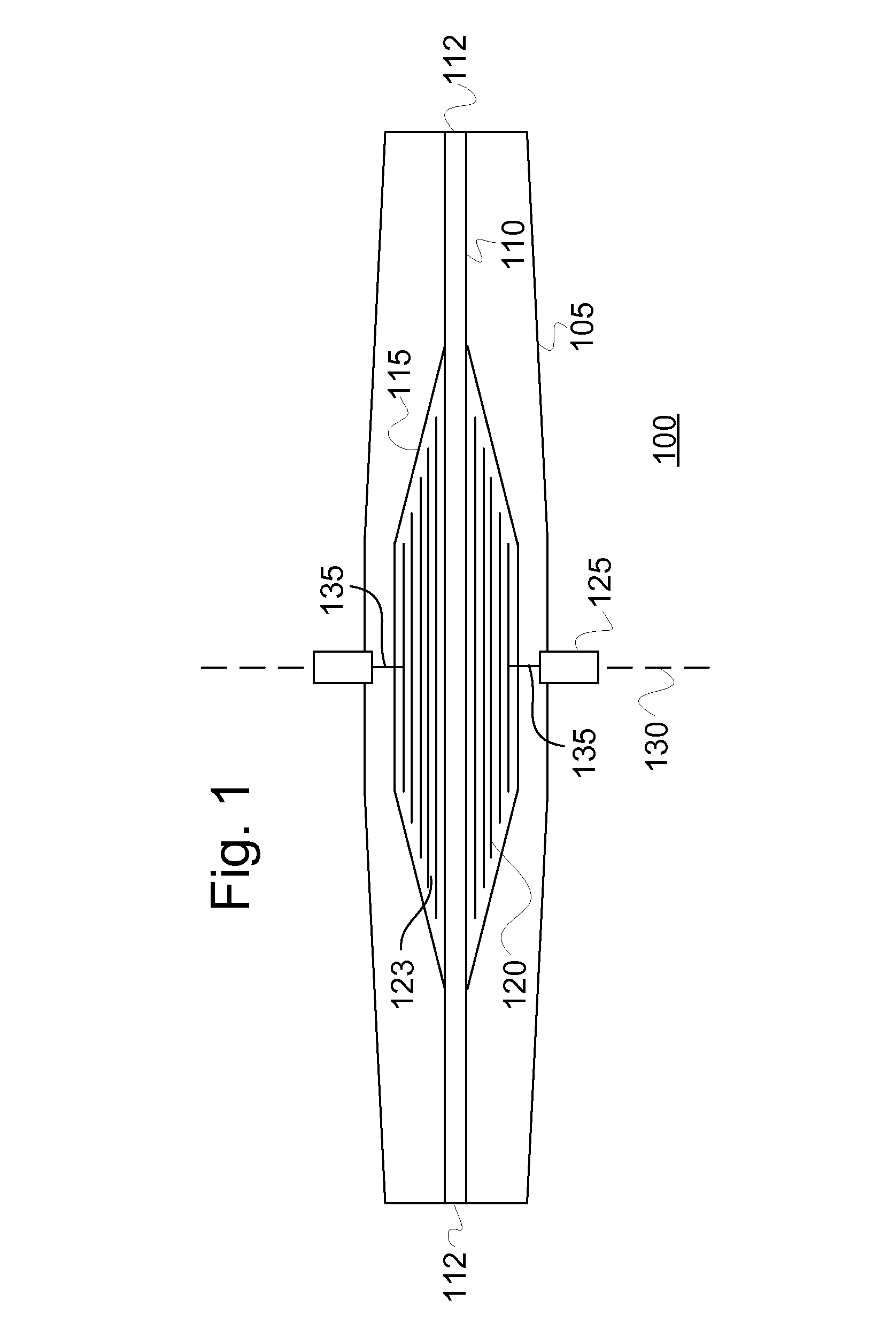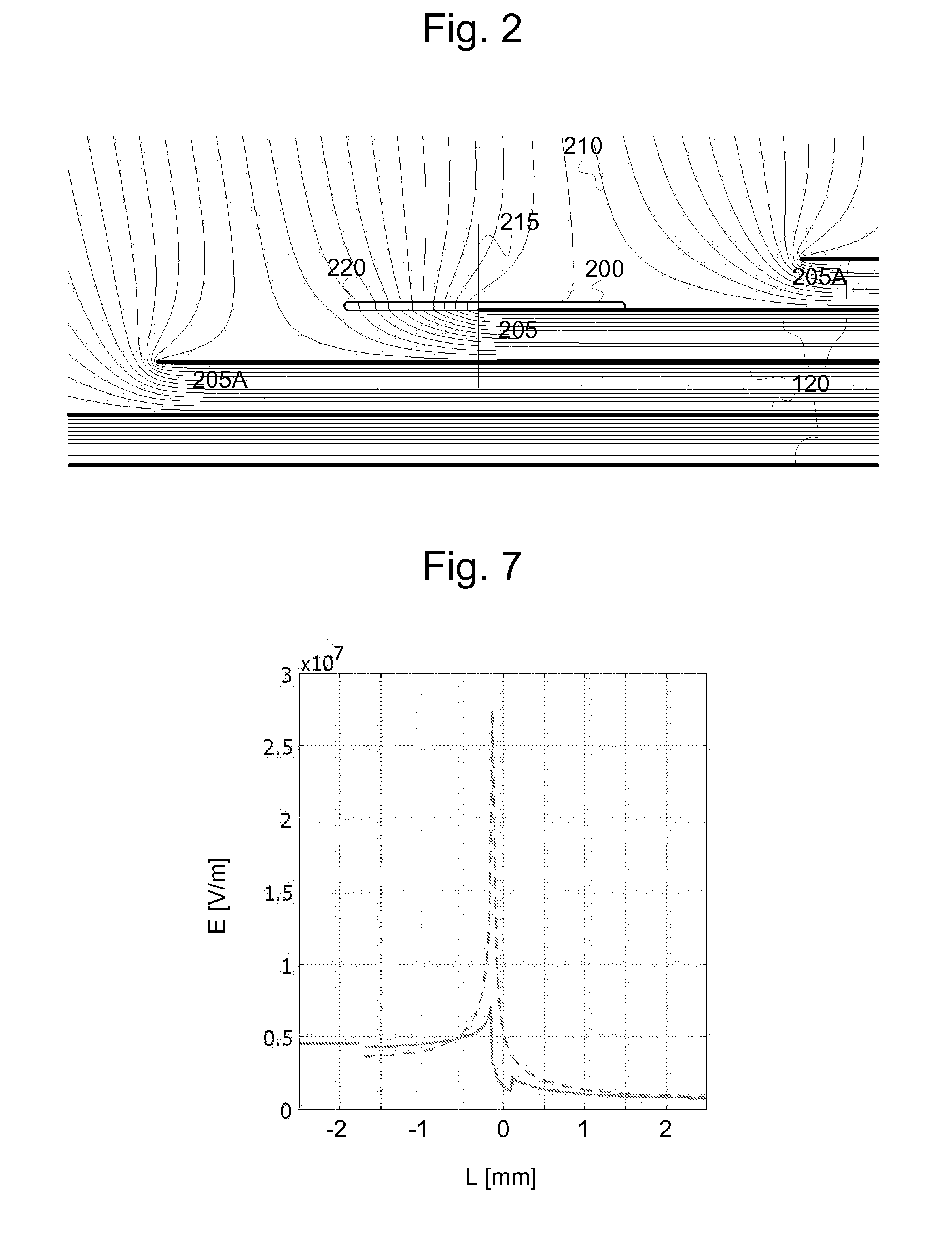Electrical Bushing
a technology of electrical bushings and bushings, applied in the direction of electrical equipment, basic electric elements, insulation bodies, etc., can solve the problem of limited physical space available for bushings, and achieve the effect of improving the relationship between voltage-withstanding properties and bushing diameter
- Summary
- Abstract
- Description
- Claims
- Application Information
AI Technical Summary
Benefits of technology
Problems solved by technology
Method used
Image
Examples
Embodiment Construction
[0028]FIG. 1 schematically illustrates a bushing 100 comprising a hollow, elongate insulator 105 through which a conductor 110 extends. At each end of the conductor 110 is provided an electrical terminal 112 for connecting the conductor 110 to electrical systems or devices. Bushing 100 of FIG. 1 furthermore comprises a condenser core 115. In FIG. 1, the conductor 110 has been shown to form part of the bushing 100. However, some bushings 100 do not include a conductor 110, but include a pipe-shaped hole in the conductor location in which a conductor 110 may be inserted.
[0029]The condenser core 115 of FIG. 1 comprises a number of foils 120 which are separated by a dielectric insulator 123. The dielectric insulator 123 is typically made of a solid insulating material, such as oil- or resin impregnated paper. The foils 120 are typically coaxially arranged, and could for example be made of aluminium or other conducting material. The foils 120 could be integrated with the dielectric mater...
PUM
 Login to View More
Login to View More Abstract
Description
Claims
Application Information
 Login to View More
Login to View More - R&D
- Intellectual Property
- Life Sciences
- Materials
- Tech Scout
- Unparalleled Data Quality
- Higher Quality Content
- 60% Fewer Hallucinations
Browse by: Latest US Patents, China's latest patents, Technical Efficacy Thesaurus, Application Domain, Technology Topic, Popular Technical Reports.
© 2025 PatSnap. All rights reserved.Legal|Privacy policy|Modern Slavery Act Transparency Statement|Sitemap|About US| Contact US: help@patsnap.com



